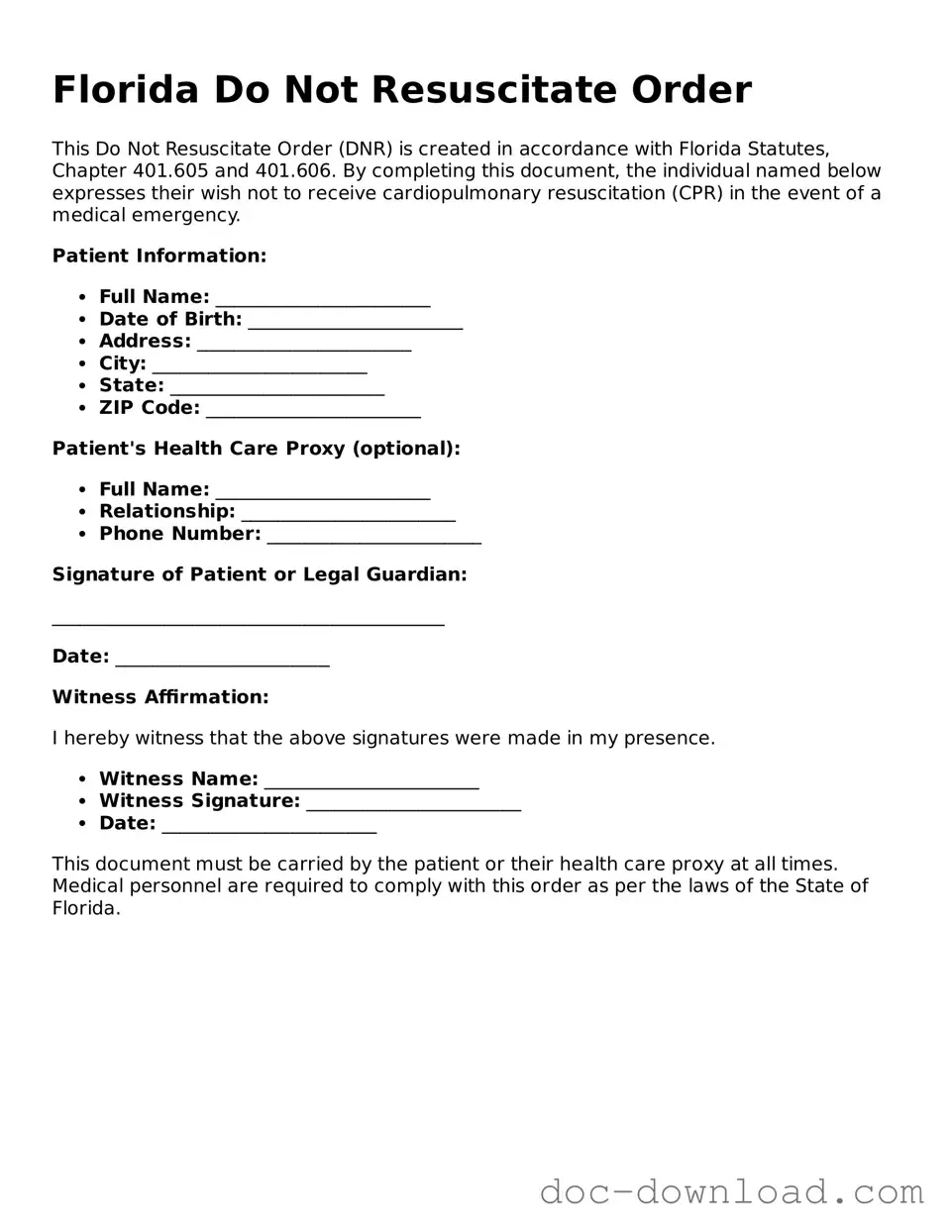The Florida Do Not Resuscitate Order (DNRO) form shares similarities with the Advance Directive. Both documents serve to communicate an individual's healthcare preferences when they are unable to do so themselves. An Advance Directive typically encompasses a broader range of medical decisions, including appointing a healthcare proxy and specifying treatment preferences. In contrast, the DNRO specifically addresses resuscitation efforts, focusing on the decision to forego CPR in the event of cardiac arrest. This makes the DNRO a critical component of an individual's overall advance care planning.
Another document akin to the DNRO is the Physician Orders for Life-Sustaining Treatment (POLST). While the DNRO is a standalone directive regarding resuscitation, the POLST form provides a more comprehensive approach to end-of-life care. POLST includes a variety of medical interventions, such as preferences for antibiotics, feeding tubes, and other life-sustaining treatments. Both forms require the signature of a physician, emphasizing the importance of professional guidance in making these significant healthcare decisions.
The Living Will is another document that parallels the DNRO. Like the DNRO, a Living Will outlines an individual's wishes regarding medical treatment in situations where they are unable to communicate. However, the Living Will covers a wider scope of medical scenarios, including terminal illness and irreversible conditions. The DNRO focuses solely on resuscitation, making it a specific directive within the broader context of end-of-life care that the Living Will addresses.
Health Care Proxy documents also bear resemblance to the DNRO. A Health Care Proxy allows individuals to appoint someone they trust to make healthcare decisions on their behalf if they become incapacitated. While the DNRO specifies the decision to decline resuscitation, a Health Care Proxy can make various decisions, including whether to initiate or withhold resuscitation efforts. Both documents empower individuals to maintain control over their healthcare, even when they cannot voice their preferences.
For those considering lending options, it is important to utilize a standard form. A fillable detailed Loan Agreement template can assist in outlining the specific terms and conditions necessary for successful transactions, ensuring clarity and legal protection for both lenders and borrowers.
The Durable Power of Attorney for Health Care is another document that is similar to the DNRO. This legal document grants a designated person the authority to make healthcare decisions on behalf of another individual. Like the Health Care Proxy, it encompasses a broader range of medical decisions, but it can include specific instructions regarding resuscitation. The DNRO complements this document by explicitly stating the individual's wishes concerning resuscitation efforts, ensuring clarity in situations where critical decisions must be made.
Lastly, the Medical Order for Life-Sustaining Treatment (MOLST) shares characteristics with the DNRO. Similar to the POLST, the MOLST is a medical order that details a patient's preferences for life-sustaining treatments. It serves as a guide for healthcare providers, ensuring that a patient's wishes are honored in critical situations. While the DNRO focuses exclusively on the decision to forgo resuscitation, the MOLST encompasses a broader array of treatment options, allowing for a more tailored approach to end-of-life care.
